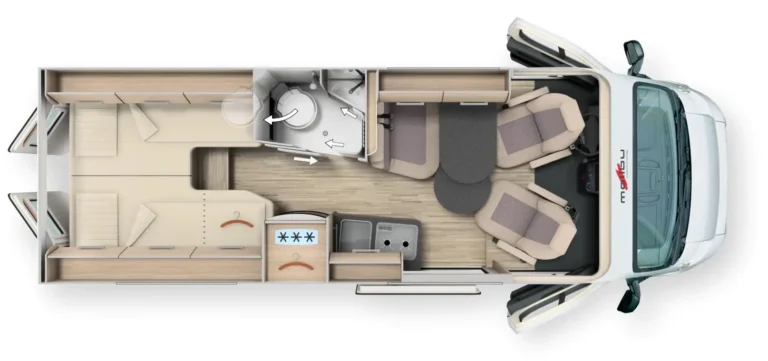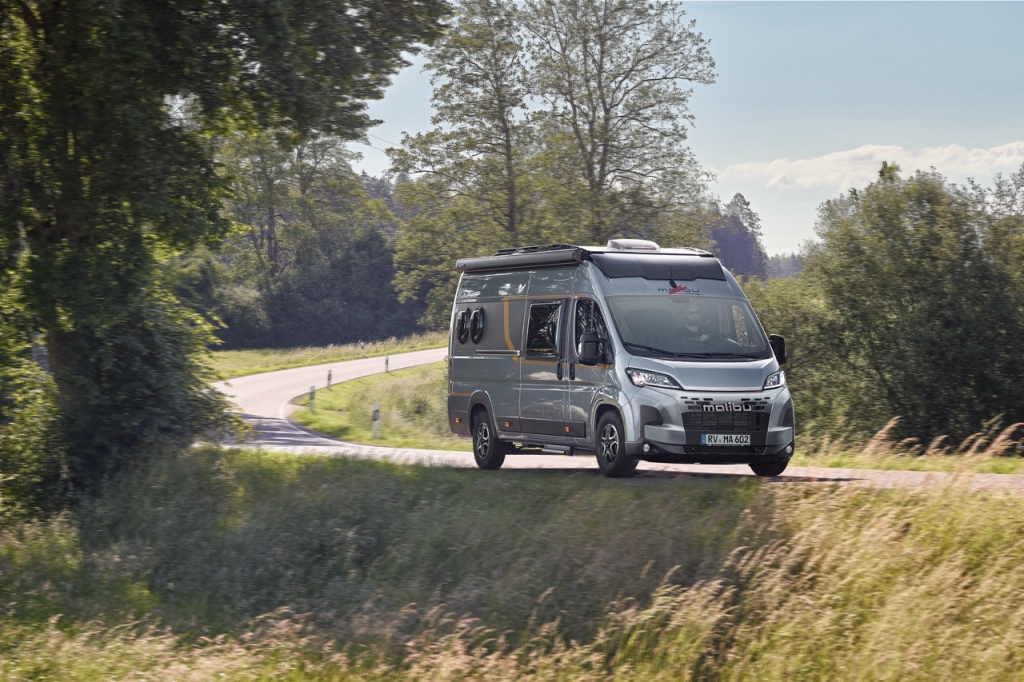comfort 640 LE
comfort 640 LE
from 59.070
GBP*
The king of comfort with a length of just under 6.36 metres and lengthways single beds with a lying length of over 200 cm on the passenger’s side.
Dimensions
L 635.5 x B 210 x H 259 cm
Sitting places
4
charming
optionally
Pop-up roof
optionally

Basic vehicleFiat Ducato
Standard chassis35 light
Base engineDiesel 2,2 l
Output (in kW/HP)103 / 140
Total length (mm)6355
Total width (mm)2100
Total height (mm)2590**
Wheel base (mm)4035
Headroom in living area (mm)1900
Tech. permissible gross vehicle weight (kg)3500 / 4000(*)
Weight in running order (kg) | Legal tolerance of -/+ 5 %2.944 (2.797 - 3.091)
Max. weight of additional equipment in series production specified by the manufacturer (kg)194
Max. towed load (kg)2500
Max. number of seats with 3-point safety belt while driving4
Rear bed dimensions (mm)2020 x 900 / 1890 x 1020
Seating area bed conversion dimensions (mm)1600 x 1145***
Bed access height (mm)990
Fridge volume (l)70
Freezer compartment volume (l)7,5
Heating systemTruma Combi 4
Fresh water volume (l)100
Fresh water tank volume with filling in running order (l)20
Waste water volume (l)92
230V socket3
12V socket1
USB socket1
Battery capacity80 Ah
(*) optional Fiat Ducato f40 chassis variant *List price incl. registration documents **if the family-for-4 pop-up roof package is selected, the height of the vehicle is 2690 mm ***in conjunction with special equipment

Find a Malibu dealer near you:
Your new camper van or motorhome are waiting for you. You just need to find out where! Find our Malibu dealers near you.

Finden Sie Ihren Malibu Händler in Ihrer Nähe:
Ihr neuer Camper Van oder Ihr neues Wohnmobil wartet schon auf Sie. Sie müssen nur wissen, wo genau. Hier finden Sie unsere Handelspartner ganz in Ihrer Nähe.